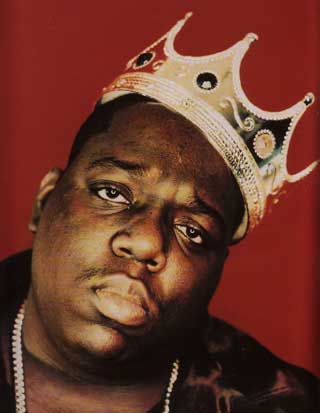Who Died and Made You King?
/ One of the more troubling things I’ve seen in the music world lately manifests out of nowhere. It happens whenever I talk to one of my students about reed choices. Now, if the student is on a decent to good set up I rarely bring up the idea of new equipment (or at least I try to). But, if the student feels that they’re at an impasse and is interested in trying something new I like to give them all of their options. I say, “Well there’s these types of Vandoren’s, these types of more boutique reed choices, these types of Rico’s…..” and right there, the student inevitably goes “Rico’s SUCK!!” or “My band director said Rico’s are bad”. And, inevitably, I start to suffer an aneurism. More than likely, the student has never tried Rico reeds, ANY Rico reeds. What is also unfortunate is that a lot of times the person (usually the band director) that gave this student this well-intentioned, but wayward advice ALSO hasn’t tried Rico. A lot of times, but not always, this is because they were originally a brass player and don’t actually have years of experience playing woodwind instruments. So, I’m asking the question, who died and made Vandoren the king of all reeds, mouthpieces, and other related music products?
Is it because of the number of reed options?
One of the more troubling things I’ve seen in the music world lately manifests out of nowhere. It happens whenever I talk to one of my students about reed choices. Now, if the student is on a decent to good set up I rarely bring up the idea of new equipment (or at least I try to). But, if the student feels that they’re at an impasse and is interested in trying something new I like to give them all of their options. I say, “Well there’s these types of Vandoren’s, these types of more boutique reed choices, these types of Rico’s…..” and right there, the student inevitably goes “Rico’s SUCK!!” or “My band director said Rico’s are bad”. And, inevitably, I start to suffer an aneurism. More than likely, the student has never tried Rico reeds, ANY Rico reeds. What is also unfortunate is that a lot of times the person (usually the band director) that gave this student this well-intentioned, but wayward advice ALSO hasn’t tried Rico. A lot of times, but not always, this is because they were originally a brass player and don’t actually have years of experience playing woodwind instruments. So, I’m asking the question, who died and made Vandoren the king of all reeds, mouthpieces, and other related music products?
Is it because of the number of reed options?
| Rico Has: | Vandoren Has: |
|
|
Is it because of artist endorsements? To boil it down, Rico seems to have more jazz and a fair amount of Bass Clarinetists while Vandoren more classical and definitely more Clarinetists.
Is it because of reed consistency? Ask anyone that plays Vandoren and they’ll probably tell you that their reeds aren’t the exact same from reed to reed. In fact, reeds are inconsistent in every brand. Some vary more than others, but the brand and sizing are estimates; you’re going to find pure consistency issues with just about any brand. And, if musicians work on their reeds, does that mean the reed manufacturer is good or does it mean that the musician is a good “reed-tweeker”?
Is it innovation? Rico has just come out with a huge series of products trying to regain their name. For example: the Rico Ligature, the Rico Cap (almost a Brilhart mouthpiece cap reissue), the H-Ligature (a throw back of the old Harrison ligatures), and the ReedVitalizer humidity packs. Even if someone uses Vandoren reeds, a lot of times they’re using a Rico ReedVitalizer along with their reed regiment, NOT a blue Vandoren reed holder with a “humidity control” that makes your reeds moldy.
Is it quality of cane? I can name at least 5 brands that age their cane longer, use more choice cane, and have higher quality control than Rico or Vandoren (Gonzales, Riggotti, Roberto’s, Alexander, Daniel’s).
Is it because Rico (kind of) doesn’t make mouthpieces? Well, they certainly have not delved into the world of mouthpieces yet. However, they do have a neck strap that people tend to like.
I guess my big point here is that I find this debate ridiculous (which is why I ironically continued it on this blog). You use what works. If a Rico Grand Concert gets you a better sound than a Vandoren 56 Rue Lepic, fine. Yes, you can take facts about the reed manufacturing process to help in the selection, but the second that someone uses brand recognition to make that decision for them, they’re not thinking about sound. And, isn’t sound really all we should care about?















